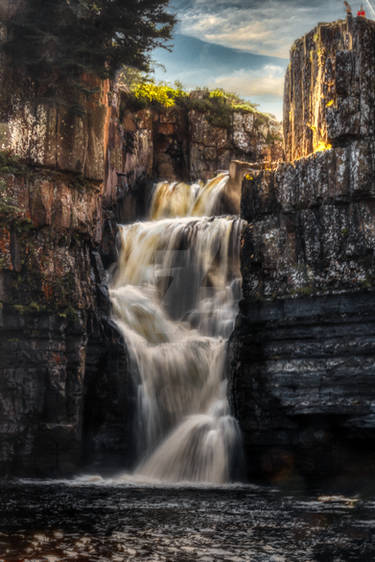It's coming up to that time of year again and to make matters worse, dA have hiked the price of super groups up to $59 or £35 in English. We have had some great help in the past with donations and are hoping for more help this year. We put allot of our own time and money into this group, to make your experience better. So anything you can give would be much appreciated by us and all of our members.
To show our appreciation, any member who donates will be part of a special Christmas feature as in previous years with the addition of social media recognition this year!
To donate head on over to the group daddies page
in-my-viewfinder and click on the donation widget that is located to right of the page.
Many thanks in advance.
in-my-viewfinderNo News is Good News
The last time we did this was May 2013 so for those who don't know this is where we show off all of our most recent features since the last "No News is Good News" feature. We are incredibly stingy with our features so if you made it here, you are awesome!
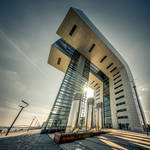
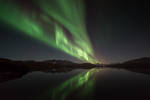
:thumb477564546:

:thumb297842172:




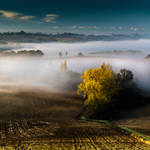


:thumb420422583:







 in-my-viewfinder
in-my-viewfinder
To squeeze or not to squeeze
This month we want to revisit an
old journal from March 2011, I hope you can forgive us for repeating ourselves. Whilst we are on the subject, we will be revisiting a few older tutorials to bring them up to date and will, hopefully, have a directory made whenever someone (me) pulls their thumb out of their ass.
The Tutorial in question was
Do you RAW or do you JPEG? and was aimed at weighing up the pro's and cons of image compression. The reason we are revisiting this is because there is more this subject than what was covered and things have change in the last 3 years.
Standard caveat applies that not all options are available on all cameras. I will try to stick alternatives for different camera models where I can to help you but I can only do so much without it getting very messy. If you are a film photographers you will be most interested in this from the negative scanning point of view. A more specific tutorial/insight on scanners will be coming in the not to distant future.
So Do you Raw or do you Jpeg?
Or maybe you NEF and if you do jpeg is it rough, normal or fine? What if you Tiff and what about shooting in multiple formats by accompanying a RAW image with a jpeg?
You have no doubt already settled into using one of these formats but what we need to know is if it is the right one for you? Is there one format that you should always use of should you switch according to your situation?
What is it?
.RAW
Should you own a Nikon camera sitting at the D5300 level or higher, you might have been looking at your camera settings and wondered what that RAW setting is all about. You are not alone.
RAW is basically the data that the sensor in your camera sees, placed into an uncompressed format that your computer can later convert into a compressed usable image. RAW is uneditable, and basically unusable until you change its format with some software like Adobe Photoshop or Nikon NX2.
Now Nikon like to be different and innovative in what they do so when you shoot in RAW, the file you end up with is an Nikon Electronic Format (NEF) file when you enable the RAW format.
It isn't a simple matter of a name change though as NEF files offer you three levels of compression (camera model dependent);
Uncompressed (so a basic RAW image)
Lossless compressed (all that lovely RAW image but not quite so large)
Lossy compressed (some image compression to a higher image quality than jpeg).
Uncompressed RAW NEF files are as they say raw data straight from the image sensor. where it saw red there is red and blue there is blue. It is a simple image that when zoomed into would just be a load of multi coloured dots. If you are old enough, a bit like you parents CRT TV when sprayed pop all over it (don't try this at home). Normally your camera would look at this data and make a jpeg image out of it but you now have the opportunity to use specialist software to to do the same thing. Why? Well your computer has allot more powerful hardware than your camera does so it has the best opportunity to do a better job.
.TIFF
Originally introduced to standardize scanner formatting and now used by some pro photographers Tabbed Image File Format (.TIFF), is a very wide ranging image format made available on some Nikon cameras. It can be very different between cameras. Some offering 12bit lossless compression and others (in the case of the D3X) 24bit RGB uncompressed images. There are literally hundreds of variations on the TIFF format so if you want to learn more about the Tiff file in general then check out the
Wikipedia page.
As a result of this variation you will read allot of misinformation on the internet about TIFF image files resulting in confusion. The best we can ask you to do is read your camera manual then draw your own conclusions but we will try to explain the .TIFF offered on the D3x as an example:
As mentioned above the TIFF format on the D3x is a 24bit RGB format so you essentially get 3, 8 bit images (1 Red, 1 Blue and 1 Green) piled into one. This way you have all the possible data from the RGB scale (that you were going to edit to anyway right?) in a bit rate that is considerably larger than what your RAW images process at (12-14bit). It is worth pointing out though that your camera isn't now shooting in 24bit so the format is more than you need and not giving you more quality for nothing. Unlike RAW, TIFF is effected by in camera post processing so if you have your Active D lighting or picture control enabled it will take effect. If this is a problem for you, then turn it off, this will make your camera quicker anyway but if you wanted to have the editability of RAW yet keep all the high and low light rescuing skills of Active D lighting, then you just found your new favorite format. So Tiff offers a bit of a gap fill between JPEG and RAW although possibly not in quite the way you might have imagined.
Jpeg
Finally we have Joint Photographic Expert Group (.JPEG or .jpg) images. The most common format for digital cameras and it is easy to see why (We will explain soon anyhoo). As with Tiff, there are many variations on the JPEG file but they tend to change the file suffix in association other variations may be added but the user won't generally know as it will still show as a JPEG. A common loss is when a .JPEG/EXIF file loses its EXIF data due to being saved in a different format say for better internet sharing like .JPEG/JFIF . The JPEG file itself can have its level of compression varied to make better use of available storage space. Pixels are essentially merged by colour matching and bleeding to create a lower resolution image to achieve a smaller file size. This is achieved by a mathematical algorithm and if you want to know about that then head over to the
wiki page. This is done in a ratio starting from a theoretical 1:1, essentially RAW .JPEG file all the way down to 100:1. The further down the scale you go, the lower the quality detail drops and artifacts begin to show. These are areas where the code has caused high contrast areas to become broken so a smooth edge may become lumpy or loom like it has flies around it.
Nikon breaks its compression stages down to:
Fine 4:1
Normal 8:1
Basic 16:1
From this we can see that even the highest quality jpeg file will lose some image data over raw but it isn't allot. Even the lowest quality hasn't gone far into the possibilities of quality loss vs file size saved.
This might sound pretty bad and to some it is but it is important to point out that allot of what is removed from the image data isn't actually visible to the naked eye anyway and it's only when you go down the high compression root that things get a bit blocky but this is only something you can do in post production.
Pros vs Cons
Does this mean you all have to turn your quality setting to TIFF or RAW this minute? Well not exactly.
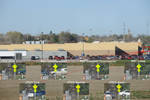
Before we get stuck into that though it might be worth having a quick peak at a rough test comprising of the basic image formats before you try to weigh up what you need. From this you might get an ide of just how close together these image formats are in quality.
We will now give you some pros and cons so you can pick and choose what will suit you at any time.
JpegPros
• Works with most computers, printers are accepted by most web sites.
• higher in contrast.
• sharper.
• compressed by removing bits that are less important to the viewer.
• comparatively smaller in file size.
• needs less post production (trusting you got it write in the first place).
• instantly editable.
• offers the maximum buffer and shutter speeds on your Nikon camera.
• processed by your camera.
Cons
• lower in dynamic range.
• Editing a jpeg lowers its quality every time it is resaved.
• Can be somewhat limiting in post production with quality issues.
RAWPros
• Can be losslessly compressed.
• higher in dynamic range.
• complete data from the camera’s sensor otherwise known as lossless.
Cons
• not generally viewable by basic image software, nor is it printable before post production.
• uncompressed so bigger files.
• read only without specific software.
• lower in contrast than JPEG.
• not as sharp as JPEG.
• generally slows and/or reduces your frame rate.
• Reduces buffer size over JPEG.
• needs processing by your computer.
• special codex needed for Nikon's NEF version of raw (changes with every new camera).
TIFF(24bitRGB)Pros
• higher in dynamic range.
• complete data from the camera’s sensor otherwise known as lossless.
• supported my most image viewing and editing software.
• supported online.
• Can be a best of both format with instant view and sharability of JPEG yet offering all the editing ability of RAW.
Cons
• Although the format supports lossless compression it is not supported on all cameras.
• Huge file sizes make sharing a problem with website file size restriction.
• not generally viewable by basic image software, nor is it printable before post production.
• uncompressed so bigger files.
• read only without speciffic software.
• lower in contrast than JPEG.
• not as sharp as JPEG.
• generally slows and/or reduces your frame rate.
• Reduces buffer size over JPEG.
Still need some help picking
It is tricky from that to pick a winner. If we take some of the cons offered above RAW and TIFF can look like pretty bad options but some of those things just don't matter. the contrast, sharpness and saturation (not mentioned as jpeg can be in black and white format) are all edited in camera for .JPEG files but are left for the RAW files. This is because you intend to edit the image in post processing so if you want more contrast then you can add some. That is where picking the correct format for the job you are doing is important. If you want to mess about im photoshop, go for RAW or TIFF. If you want to upload directly to the internet go Jpeg. The reason we don't suggest TIFF is that the file size is just to big for most websites. TIFF is still good for sending off for printing where you can't afford the losses of JPEG and makes for simpler viewing/editing over RAW NEF or otherwise.
The big clincher for many that puts RAW above that of TIFF for image editing is file size and if that isn't the problem then chances are they may still be thinking of a different lossy TIFF format and associating it with JPEG.
Some kind of Conclusion?
As ever we won't tell you what to do. RAW and TIFF offer loads of flex in post production allowing you to rescue all but the biggest muck ups whilst shooting.
Jpeg on the other hand is lighter and faster in every way. Images capture, save, transfer and upload faster. The only place you might slow down is editing where image preservation becomes more of a focus. This can all be helped by; Getting it right in the first place, preserving your original file whilst editing by editing a copy and getting all of your editing done in one go. A further boost for JPEG is that as the size of image sensors grows we are being given ever larger images that we are very unlikely to publish full size anyway so the losses of jpeg become even less of a problem. It all depends on just what you want from your end product.
Share your thoughts
This is a big and highly technical subject that we will be revisiting frequently. If you have any opinions and/or questions then please leave a message on this journal or the
Poll where the debate gets going more often than not.
in-my-viewfindersuggested by
silverroses222How to select quality
This didn't feature in our long running buttons tutorial as not all cameras have the quality button. We may encompass this in a menus tutorial theme in the future but it seems like a good idea to bolt this on to the end of the quality tutorial now for those who don't know how to change there image quality and why.
Where is it?

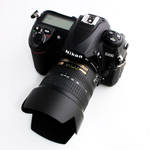


You may need your manual now as this can vary allot, as you can see from the images above. The button is usually marked as (QUAL) and will often have multiple uses like being part of formatting (denoted by a spot or text written off button). Usually pressing and holding the button down whilst spinning the thumb control wheel will allow you to cycle through your camera quality options. Some cameras will also let you cycle jpeg image sizes as well using the front wheel.
If you don't have the Quality button then it will be an option in your menus. This is also true for compact cameras as many of them can change the quality of their images to although you may need to change to a manual mode before this option is visible.
To find the menu on most SLR's you need to go to
Menu>Shooting Menu>Quality where you will see the list of quality options. Alternatively
Menu>Shooting Menu>Image size will give you the Small, Medium or Large image size options (grayed out on D3x when not in jpeg) and
Menu>Shooting Menu>Image Area allows you to chose crop options on FX sensored cameras.
What is it?
Quality options allow you to change between the available image quality options on your camera. Not all cameras are created equal so you might not get all of these options but they may include:
RAW + Jpeg - Fine
RAW + Jpeg - Normal
RAW + Jpeg - Basic
TIFF
Jpeg - Fine
Jpeg - Normal
Jpeg - Basic
The Jpeg file can also be broken down to Small, Medium and Large images. All images will be subject to DX cropping on FX cameras when using an DX lens or the option is selected in the menu, further effecting image and file size.
Why should I use it?
Well this is an answer we were trying to find in the above tutorial. It is a weigh up between how high a quality image you want vs the time spent editing and file size. As memory cards and hard drives get bigger the file size issue is becoming more of a non issue than before but on the other hand as image sensors improve so the file sizes increase.
Another factor is buffer and shutter speeds. Your camera can only write to its solid state memory card so fast. To allow your camera to shoot multiple images faster than your memory cards write speed you have a buffer of RAM. If you are shooting at 8fps you are going to rapidly fill the cameras buffer up leaving your camera now shooting at a reduced motor speed till you allow the buffer to empty into the card. It stands to reason then, that if you shoot with smaller files, the buffer will last longer and individual files will save faster. So basically switch to jpeg for the fastest and longest lasting burst of constant high motor speed. If you have allot of post processing enabled (like log exposure noise reduction, Active D lighting or vignette control) on your jpeg files you will again suffer a penalty in motor speed. A touch off topic but relevant.
You could try dropping to a DX crop to give RAW a couple more frames (I believe some SLR's do this by default to achieve higher shutter speeds) if you really have to work with RAW.
If shooting long bursts at high shutter speeds isn't something that bothers you then we are left with a simple choice. Do you want to edit this image or not? If you do spend hours in lightroom then you probably shoot or want to shoot in RAW. if you are intending to send your images directly to the associated press then you wont want to edit your images (I think they shoot you if you do) so you want to shoot in jpeg.

























